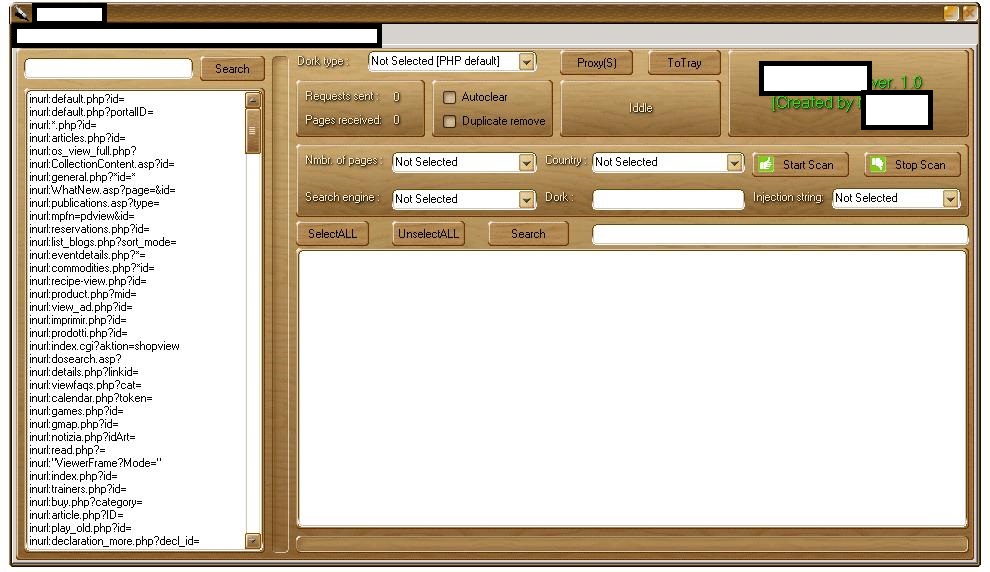Let’s take a look at a DIY (do it yourself) type of mass Web site hacking tool, to showcase just how easy it is to efficiently compromise tens of thousands of Web sites that have been indexed by the World’s most popular search engine.
Sample screenshots of the DIY mass Web site hacking/SQL injecting tool based on the Google Dorks concept:




 The proxy (compromised malware infected hosts)
supporting tool has been purposely designed to allow automatic mass Web
sites reconnaissance for the purpose of launching SQL injection attacks
against those Web sites that are vulnerable to this common flaw. Once a
compromise takes place, the attacker is in a perfect position to inject
malicious scripts on the affected sites, potentially exposing their
users to malicious client-side exploits serving attacks. Moreover, as
we’ve seen, the same approach can be used in a combination with
privilege escalation tactics that could eventually “convert” the
compromised host as part of an anonymous, cybercrime-friendly proxy
network, as well act as a hosting provider for related malicious of
fraudulent content like malware or phishing pages. With the list of
opportunities a cybercriminal could capitalize on being proportional
with their degree of maliciousness or plain simple greed, Web site
owners are advised to periodically monitor their site’s reputation by
taking advantage of managed Web application vulnerabilities scanning
services, or through Google’s SafeBrowsing.
The proxy (compromised malware infected hosts)
supporting tool has been purposely designed to allow automatic mass Web
sites reconnaissance for the purpose of launching SQL injection attacks
against those Web sites that are vulnerable to this common flaw. Once a
compromise takes place, the attacker is in a perfect position to inject
malicious scripts on the affected sites, potentially exposing their
users to malicious client-side exploits serving attacks. Moreover, as
we’ve seen, the same approach can be used in a combination with
privilege escalation tactics that could eventually “convert” the
compromised host as part of an anonymous, cybercrime-friendly proxy
network, as well act as a hosting provider for related malicious of
fraudulent content like malware or phishing pages. With the list of
opportunities a cybercriminal could capitalize on being proportional
with their degree of maliciousness or plain simple greed, Web site
owners are advised to periodically monitor their site’s reputation by
taking advantage of managed Web application vulnerabilities scanning
services, or through Google’s SafeBrowsing.We expect to continue observing such DIY efficiency-oriented underground market releases, with the logical transformation of DIY type of products, to actual managed services launched primarily by novice cybercriminals, either enjoying a lack of market transparency through biased exclusiveness of their proposition, or through propositions aimed at novice cybercriminals who wouldn’t have access to such tools.
hi sir can you plz tell me name of it
ReplyDelete